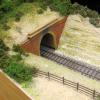EPW018557 ENGLAND (1927). St Botulph's Church and Plough Corner, Colchester, 1927
© Copyright OpenStreetMap contributors and licensed by the OpenStreetMap Foundation. 2025. Cartography is licensed as CC BY-SA.
Nearby Images (9)
Details
| Title | [EPW018557] St Botulph's Church and Plough Corner, Colchester, 1927 |
| Reference | EPW018557 |
| Date | 20-June-1927 |
| Link | |
| Place name | COLCHESTER |
| Parish | |
| District | |
| Country | ENGLAND |
| Easting / Northing | 599902, 224856 |
| Longitude / Latitude | 0.90507551265813, 51.885924939467 |
| National Grid Reference | TL999249 |
Pins

PrezAlan |
Saturday 14th of March 2015 02:59:30 PM | |

PrezAlan |
Saturday 14th of March 2015 02:58:01 PM | |

PrezAlan |
Saturday 14th of March 2015 02:55:56 PM | |

woodsy007 |
Monday 17th of November 2014 08:48:40 PM | |

woodsy007 |
Monday 17th of November 2014 08:47:12 PM | |

woodsy007 |
Sunday 27th of July 2014 07:04:31 PM | |

woodsy007 |
Sunday 27th of July 2014 07:03:30 PM | |

woodsy007 |
Sunday 27th of July 2014 07:02:42 PM | |

Maurice |
Wednesday 17th of April 2013 08:21:07 AM | |

Maurice |
Wednesday 17th of April 2013 08:12:20 AM | |

Maurice |
Wednesday 17th of April 2013 07:21:24 AM | |
In the U.K. The first "white line" road markings appeared on a number of dangerous bends on the London-Folkestone road at Ashford, Kent, in 1914, and during the 1920s the rise of painted lines on UK roads grew dramatically. In 1926, the Ministry of Transport issued official guidelines defining where and how white lines should be used. A broken white line in the direction of travel, where the gaps are longer than the painted lines, indicates the centre of the road and that there are no hazards specific to the design and layout of the road, i.e. no turnings, sharp bends ahead etc. A broken white line in which the gaps are shorter than the painted lines indicates an upcoming hazard, the proportion of white to black indicates the degree of hazard i.e. more white means more hazard. See http://en.wikipedia.org/wiki/Road_surface_marking While the picture is 1927 and so post the 1926 official guidelines, the rather sketchy nature of these lines suggest they might have been some local initiative/interpretation. There is no stop line and the ‘S’ shaped ‘centre’ line is very much off centre. |

Maurice |
Wednesday 17th of April 2013 08:09:36 AM |

romons |
Monday 17th of December 2012 08:44:41 PM |


![[EPW018557] St Botulph's Church and Plough Corner, Colchester, 1927](http://britainfromabove.org.uk/sites/all/libraries/aerofilms-images/public/100x100/EPW/018/EPW018557.jpg)
![[EPW018548] Abbey Gardens and the town, 1927](http://britainfromabove.org.uk/sites/all/libraries/aerofilms-images/public/100x100/EPW/018/EPW018548.jpg)
![[EAW037496] Osborne Street and the town centre, Colchester, 1951. This image has been produced from a print.](http://britainfromabove.org.uk/sites/all/libraries/aerofilms-images/public/100x100/EAW/037/EAW037496.jpg)
![[EAW024676] The town, Colchester, 1949](http://britainfromabove.org.uk/sites/all/libraries/aerofilms-images/public/100x100/EAW/024/EAW024676.jpg)
![[EPW018545] St Botulph's Station and the town, Colchester, 1927](http://britainfromabove.org.uk/sites/all/libraries/aerofilms-images/public/100x100/EPW/018/EPW018545.jpg)
![[EAW015358] The town, Colchester, from the south-east, 1948. This image has been produced from a damaged negative.](http://britainfromabove.org.uk/sites/all/libraries/aerofilms-images/public/100x100/EAW/015/EAW015358.jpg)
![[EAW029728] Osborne Street, St John's Street and the town, Colchester, 1950](http://britainfromabove.org.uk/sites/all/libraries/aerofilms-images/public/100x100/EAW/029/EAW029728.jpg)
![[EPW018554] The Royal Artillery Ordnance depot and town around St John's Green, Colchester, 1927](http://britainfromabove.org.uk/sites/all/libraries/aerofilms-images/public/100x100/EPW/018/EPW018554.jpg)
![[EAW037498] The town centre, Colchester, 1951. This image has been produced from a print.](http://britainfromabove.org.uk/sites/all/libraries/aerofilms-images/public/100x100/EAW/037/EAW037498.jpg)